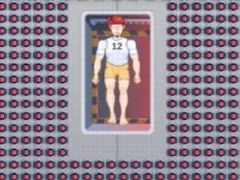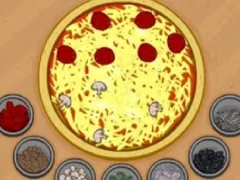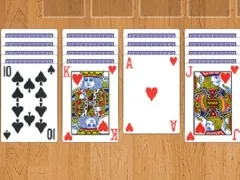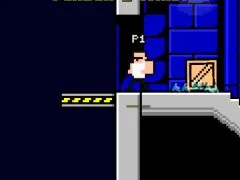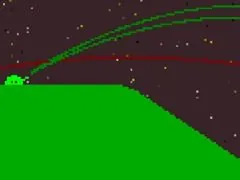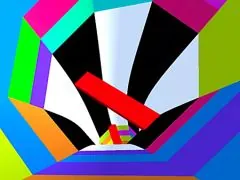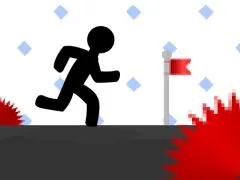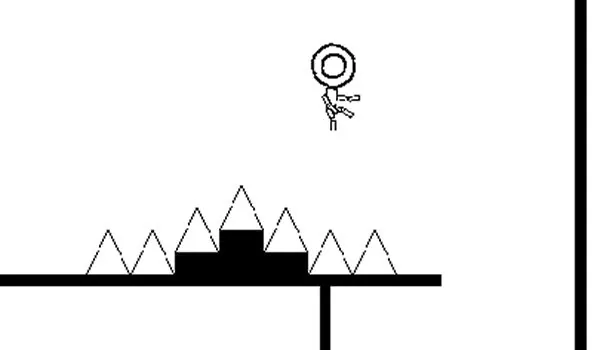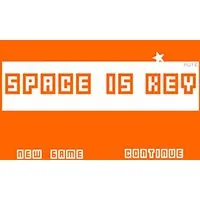RED BALL
SIMILAR GAMES
Description
Red Ball - Unblocked WTF
About Red Ball - Unblocked WTF
We are delighted to present an in-depth exploration of Red Ball, a captivating physics-based platformer that has garnered significant attention for its unique blend of challenging gameplay and engaging mechanics. At its core, Red Ball invites players into a vibrant world where a determined red sphere embarks on a perilous journey through a meticulously designed series of levels. Our objective is to navigate this charming protagonist, using a combination of intuition, timing, and a thorough understanding of the game's physics engine, to overcome every obstacle and solve every puzzle presented.
This game distinguishes itself by seamlessly integrating classic platforming elements with innovative physics-driven challenges. Players will find themselves rolling, jumping, and bouncing their way through an increasingly complex array of environments. Each stage is a testament to thoughtful design, introducing new mechanics and obstacles that constantly test and refine the player's skills. From seemingly simple chasms and inclines that require careful trajectory planning to intricate puzzles that necessitate the activation of levers and switches in precise sequences, Red Ball demands a keen intellect and agile reflexes.
The control scheme in Red Ball is designed for accessibility, allowing for exceptionally smooth and responsive gameplay. This intuitive interface ensures that players can focus on the strategic aspects of each level rather than struggling with cumbersome commands. However, the true brilliance of the game lies in its physics interactions. These are not merely aesthetic; they are fundamental to progression. Mastering these interactions, understanding how the red ball will react to different surfaces, inclines, and external forces, is paramount. Precise timing and strategic navigation are essential to avoid the myriad pitfalls that litter each level and to ultimately conquer the challenges that stand between the player and success.
The Core Mechanics of Red Ball Gameplay
The fundamental appeal of Red Ball lies in its elegantly simple yet profoundly deep set of core mechanics. At its heart, the game revolves around the precise control of a spherical protagonist through a series of increasingly elaborate 2D environments. This control is not simply about direction and speed; it is intrinsically tied to the laws of physics as they are simulated within the game world.
- Rolling and Momentum: The primary mode of locomotion for the red ball is rolling. Players will learn to leverage momentum, building speed on downhill slopes to clear larger gaps or carefully controlling deceleration on ascents. Understanding how momentum is gained and lost is crucial for executing precise jumps and navigating tricky terrain.
- Jumping and Trajectory: Jumping is a critical action that requires careful consideration of both height and distance. The game simulates a realistic arc for jumps, influenced by the ball's current speed and any external forces acting upon it. Players must learn to anticipate the trajectory of their jumps to land on narrow platforms or avoid incoming hazards.
- Bouncing and Rebounding: The spherical nature of the protagonist means bouncing is an inherent characteristic. This can be used to the player's advantage, allowing for vertical ascent by strategically bouncing off surfaces or to alter trajectory mid-air. Conversely, uncontrolled bouncing can lead to unexpected falls or collisions.
- Physics Interactions: Beyond basic movement, the game incorporates a rich array of physics interactions. This includes gravity's constant pull, friction affecting speed and traction, and the impact of collisions with various environmental elements. Understanding these forces is key to solving puzzles and surviving challenging sections.
Navigating Diverse Levels and Obstacles
Red Ball thrives on its level design, which consistently introduces novel challenges and progressively tests the player's mastery of the core mechanics. Each stage is a carefully constructed puzzle box, demanding a unique approach and often forcing players to rethink their strategies.
Early Game Challenges: Mastering the Basics
In the initial levels, players are gently introduced to the fundamental mechanics. Simple gaps and inclines serve as the primary obstacles, teaching the player the importance of building momentum for jumps and controlling their speed on slopes. These early stages emphasize the intuitive nature of the controls, allowing players to get a feel for how the red ball responds to their input. We focus on building a foundational understanding of how the ball rolls, jumps, and interacts with basic terrain features.
Mid-Game Complexity: Puzzles and Environmental Interactions
As players progress, the complexity escalates significantly. The environments become more intricate, featuring moving platforms, falling blocks, and various contraptions that require active engagement. Puzzles involving levers, buttons, and pressure plates become commonplace. Players will need to think logically and spatially to activate mechanisms in the correct order, often requiring precise timing to traverse newly opened pathways or avoid newly activated traps. The interplay between the ball's physics and these environmental elements becomes a central theme, demanding strategic thinking alongside dexterity.
Advanced Stages: Precision and Problem-Solving
The later stages of Red Ball push the boundaries of player skill. These levels are designed to be true tests of precision, demanding near-perfect execution of jumps, rolls, and bounces. Obstacles become more dynamic and hazardous, often requiring players to react instantaneously to changing conditions. Complex chains of events, where activating one mechanism triggers a cascade of reactions, become more frequent. Successfully navigating these advanced stages requires a deep understanding of the game's physics, meticulous planning, and the ability to perform under pressure. We emphasize the need for players to truly internalize the game's mechanics to overcome these formidable challenges.
The Role of Physics in Red Ball's Design
The physics engine is not merely a feature of Red Ball; it is the very soul of the game. This carefully implemented system dictates how every element interacts, creating a consistent and predictable, yet often surprising, gameplay experience. The fidelity of these physics simulations is what elevates Red Ball from a simple arcade game to a genuine test of skill and spatial reasoning.
Gravity and Its Impact on Movement
Gravity is a constant, unwavering force in Red Ball. It dictates the arc of every jump, the speed at which the ball descends, and the way it interacts with inclines. Understanding how gravity influences the ball's trajectory is paramount for making accurate jumps and controlling descent speed. Players learn to anticipate the pull of gravity and use it to their advantage, such as timing a jump to maximize airtime or using a downward slope to gain necessary velocity.
Friction and Traction Dynamics
Friction plays a vital role in how the red ball interacts with different surfaces. Smooth surfaces offer less resistance, allowing for greater speed and momentum, while rougher surfaces provide more traction, aiding in controlled stops and climbs. The interplay of friction on various materials is critical for navigating slippery slopes, sticky surfaces, and areas where precise traction control is necessary to prevent unintended slippage or loss of momentum.
Collisions and Momentum Transfer
The game accurately simulates collisions between the red ball and its environment. These interactions are not just visual; they involve the transfer of momentum. A hard impact can send the ball bouncing unpredictably, while a glancing blow might alter its course slightly. Players must learn to predict the outcome of collisions, using them strategically to break obstacles, propel themselves forward, or avoid hazardous impacts. The responsiveness of these collision physics is key to the game's challenging yet fair nature.
Environmental Interactions and Puzzle Solving
Beyond the inherent physics of the ball itself, Red Ball incorporates a multitude of environmental elements that respond to the ball's presence and actions. These interactions are the bedrock of the game's puzzle design, requiring players to think critically about cause and effect.
Levers, Buttons, and Switches
A recurring theme in Red Ball is the activation of mechanical contraptions. Levers must be pulled, buttons pressed, and switches flipped to alter the game world. Often, these mechanisms are time-sensitive or require the ball to remain in a specific position, demanding precise timing and strategic positioning. The sequence in which these elements are activated can dramatically change the environment, opening new paths or triggering traps.
Moving Platforms and Dynamic Terrain
Many levels feature platforms that move, retract, or appear and disappear. Players must learn to time their jumps and movements to coincide with the optimal position of these dynamic elements. The unpredictability of some moving platforms adds an extra layer of challenge, requiring constant adaptation and quick reflexes. Understanding the patterns of these moving elements is crucial for successful progression.
Hazardous Elements and Their Physics
The world of Red Ball is not without its dangers. Spikes, crushing blocks, laser beams, and other hazards are strategically placed to impede progress. Each hazard has its own unique behavior and interaction with the game's physics. Players must meticulously study the patterns and timing of these hazards to navigate safely. Avoiding these dangers often involves using the environment itself as cover or employing precise timing to slip through seemingly impossible gaps.
The Joy of Mastery: Why Red Ball Engages Players
The enduring appeal of Red Ball stems from a masterful combination of accessibility and depth, offering a rewarding experience for players of all skill levels. The satisfaction derived from overcoming its challenges is a testament to its well-crafted design and engaging mechanics.
Intuitive Controls for Immediate Playability
From the very first moment, players can pick up and play Red Ball with ease. The simple, intuitive control scheme—typically involving directional movement and a jump button—allows for immediate immersion. This low barrier to entry ensures that the focus remains squarely on the game's challenges and the player's burgeoning understanding of its physics, rather than on deciphering complex controls. This accessibility is a cornerstone of its widespread appeal.
Rewarding Problem-Solving and Strategic Thinking
Beyond mere reflexes, Red Ball rewards careful thought and strategic planning. Each level presents a unique puzzle that often requires players to experiment, observe, and deduce the correct solution. The "aha!" moment when a complex mechanism is finally understood and a seemingly impossible obstacle is overcome provides a deep sense of accomplishment. We find immense satisfaction in devising and executing the perfect strategy to conquer each stage.
The Thrill of Precision and Timing
For players who relish a challenge, Red Ball offers ample opportunity to hone their skills in precision and timing. Executing a perfectly timed series of jumps, navigating a perilous gauntlet of hazards, or performing a complex sequence of actions to activate a series of switches provides an exhilarating rush. The game masterfully balances difficulty, ensuring that success feels earned through skill and perseverance rather than sheer luck.
A Timeless Platforming Experience
In an era of increasingly complex games, Red Ball offers a refreshing return to the elegant simplicity of classic platforming, enhanced by modern physics. Its focus on core gameplay mechanics, clever level design, and satisfying physics interactions creates an experience that is both timeless and captivating. We believe this dedication to fundamental design principles is what allows Red Ball to stand out and provide such enduring entertainment.
The Future of Red Ball and Similar Games
The success and enduring popularity of Red Ball highlight a clear demand for well-designed, physics-based platformers. As technology advances and game design continues to evolve, we anticipate seeing even more innovative titles that build upon the foundations laid by games like this. The focus on intuitive mechanics, engaging puzzles, and the intrinsic challenge of mastering physics simulations will undoubtedly continue to captivate players and drive the evolution of the platforming genre.
Continuing the Adventure
For those who have conquered the challenges of Red Ball and seek more of this delightful gameplay experience, there are often sequels and similar titles that offer new worlds to explore and fresh puzzles to solve. The core principles of rolling, jumping, and strategic physics manipulation remain, but developers continually find new ways to innovate and surprise players. We encourage enthusiasts to seek out these experiences to further immerse themselves in the joy of expertly crafted platforming adventures.
Red Ball is an engaging physics-based platformer where players control a charismatic red ball tasked with navigating through various levels filled with obstacles and puzzles. The game combines elements of classic platforming with physics-driven challenges, requiring players to roll, jump, and bounce their way to victory. Each level introduces different mechanics and obstacles, from simple gaps and hills to complex puzzles involving levers and switches. The intuitive controls allow for smooth gameplay, while the physics interactions demand precise timing and thoughtful navigation to avoid pitfalls and conquer obstacles.
Challenging Levels and Inventive Design
As players progress in Red Ball, the difficulty increases, presenting more complex challenges that test both problem-solving skills and dexterity. The game’s levels are creatively designed, featuring a variety of environments that keep the gameplay fresh and exciting. Players must use the environment to their advantage, manipulating objects and timing their movements to progress. The game challenges players to complete each level and to collect stars along the way, adding an additional layer of difficulty for those seeking to perfect each stage.








